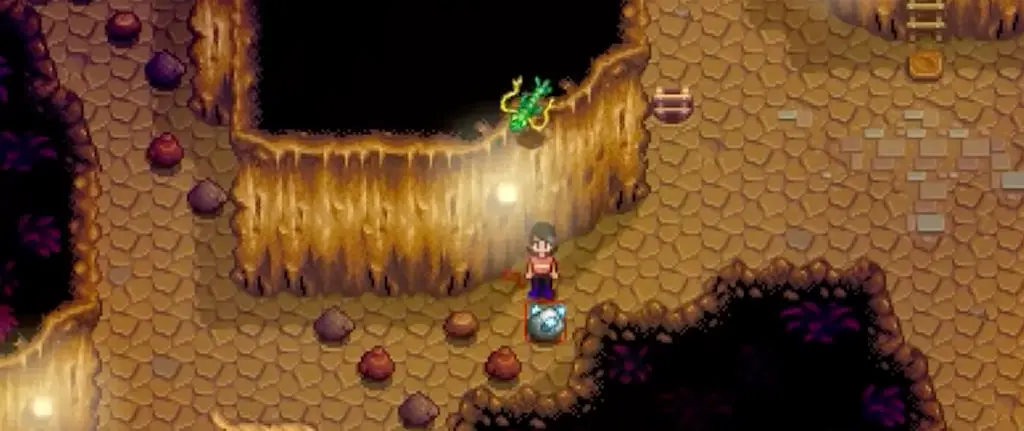Stardew Valley Multiplayer Tips: Time, Inventory, Mining, and More!
Hello, friends! In this tutorial, we will discuss the differences between single-player and multiplayer modes in Stardew Valley. We have revised some errors and added more content compared to the previous version.

Main Difference: Time Management
The most significant difference between single-player and multiplayer is time management. In single-player mode, time is paused when opening menus, playing fishing mini-games, or performing any action with animations. However, in multiplayer, time does not pause unless all players open their menus simultaneously.
Inventory Management and Fishing
Players accustomed to single-player mode may find that time passes much quicker in multiplayer, especially when organizing items in chests. It is advisable to categorize items and use the quick stack feature in multiplayer for efficiency. Fishing is also affected, as time does not pause during the mini-game, resulting in lower efficiency and longer time spent catching difficult fish, like catfish on Spring 3. In some cases, two players fishing together may have lower earnings than a single player in single-player mode.
Mining and Monster Encounters
Mining is slightly less affected by the time differences. In single-player mode, time pauses when using stairs and elevators or eating food. However, in multiplayer mode, time does not pause. Eating food still grants a short period of invulnerability, but it is much shorter than in single-player mode. Players should be cautious when eating food during monster encounters to avoid dying. It is also essential to minimize opening the inventory to avoid wasting time.
Collaborative Mining
When mining together, as long as someone is in the mine, mine items will not respawn. Due to network latency, there may be a delay in item respawning even after everyone has left the mine. Players can still mine together for faster progression, as more people can help find stairs and collect coal from minecarts. However, players cannot expect the same earnings as in single-player mode when using time manipulation techniques, such as pausing time to place stairs or collect ores.
Multiplayer Bugs and Harvesting
In multiplayer mode, players may encounter item duplication bugs, such as receiving multiple prismatic shards. Harvesting crops also does not pause time in multiplayer, taking at least twice as long as in single-player mode. Players can speed up harvesting by clicking with the mouse to skip some animations, but this can be tiring and may not be worth the effort.
Increased Efficiency in Multiplayer Mode
Overall, the earnings and progress speed in multiplayer mode are much faster than in single-player mode. Farming together offers significant advantages. Each player has their own set of tools, so there is no need to worry about upgrading watering cans or axes simultaneously. In the early stages, players can restore their energy by resting in bed, starting with 270 energy points, which can be fully restored in about three hours. With multiple players, the farm can be cleaned up quickly, and large areas of crops can be planted and watered without energy issues. A few players can focus on watering, which is an effective early development strategy for multiplayer mode. However, this can be tedious for those assigned to watering tasks, as they may feel like mere tools.
Skill and Experience Point Allocation
Each player’s skill experience points are separate. For example, experience from farming is only gained when harvesting, regardless of who planted or watered the crops. The player who harvests the crops will earn the experience. For chopping trees, the player who makes the final chop earns the experience. Efficiently allocating experience points can lead to faster development. One player can focus on harvesting to quickly level up farming skills, enabling them to craft sprinklers, casks, and other essential items sooner. Another player can focus on chopping trees to quickly craft tappers and lightning rods. Most players in multiplayer mode collaborate and enjoy playing together.
Shared and Individual Resources
If players choose to share funds at the beginning, they not only earn and spend money together, but also share price-related skills. When selling items, the price is calculated based on the highest skill level among the players. If funds are not shared, the price is calculated based on the skill of the player who sells the item. Skills not related to prices only apply to the individual player. For example, a player with the Agriculturist skill will speed up crop growth, while others without the skill will not. Players should be mindful of their skills when performing tasks.
Relationships and Events
Each player’s relationships with villagers are independent, allowing individual players to marry villagers. If multiple players want to marry the same villager, it is first come, first served. Players can marry each other without gifting a wedding ring and still receive a Stardrop. After marrying a player, marrying a villager will no longer grant a Stardrop. Players can also have or adopt children, but all players need to confirm it. Similarly, attending festivals requires confirmation from all players.
Host Control and Mods
In multiplayer mode, some main storylines and events can only be triggered by the host. If a task cannot be completed, switching hosts may resolve the issue. Regarding mods, as long as they do not alter the terrain or storyline, individual players can use them. Mods for beautification or those like CJB can be used without everyone installing the same mods. However, it is not difficult to share and install the same mods for all players, so it is still recommended to use the same mods when possible.